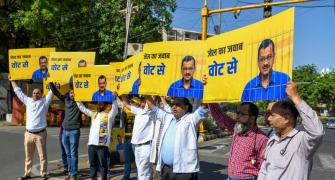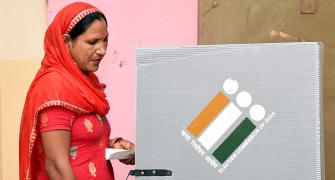While states across the country grapple with the problem of getting power to the rural areas, Gujarat stands tall as an exception. The state government's Jyoti Gram Yojana (JGY) has not only ensured 100 per cent village electrification but also 24 X 7 power supply.
Power On
Gujarat
- The scheme sought to provide power from separate feeders. About 12,621 new transformer centres and 56,599 km of new lines were laid down
The result is a resurrection of rural industries in the state and reverse migration to rural areas.
At an expenditure of over Rs 1,000 crore (Rs 10 billion), the programme has successfully covered the 18,065 inhabited villages and 9,681 hamlet-suburbs in the villages in Gujarat. As against the common practice of catering to power supply for agriculture and households from a common feeder, the scheme sought to provide power from separate feeders. About 12,621 new transformer centres and 56,599 km of new lines were laid down.
Implemented in a record time of 30 months, the project involved installation of specially designed transformers to provide round-the-clock electricity supply for domestic use to farmers living in farm houses.
Compared to big players who struggle to control their transmission and distribution losses (T&D), the project achieved a tangible reduction in T&D losses by 4.88 per cent in the financial year 2005-06. The transformer failure rate has also reduced by 1.17 per cent.
A study conducted by CII and the Institute of Rural Management on the Jyotigram Yojana shows that an increase in the level of average employment and reduction in migration from rural areas by 33 per cent.
Post-Jyotigram, the socio-economical benefits have also been far fetched.
For instance, time spent on education has increased by 90 per cent, while time spent on entertainment is up 88 per cent. Income generated by rural women has increased by 18 per cent, according to the study.
What's more, there has been a 200 per cent increase in the number of phone booths and 300 per cent increase in provision stores in these villages.
Add to that, a further increase in number of commercial units like cyber cafes, fax and photocopying shops.
At the same time, personal testimonies of the villagers have been revealing as well.Jagdish Laaniya and his wife Kanchanben of Ratanpar village, a hamlet in Bhavnagar, lived in the nearby town of Botad, where Jagdish used to work in a diamond polishing unit.
After the Jyoti Gram Yojana reached Ratanpar, the couple decided to return and set up their own diamond polishing machine and a lathe machine in the village.
Apart from diamond polishers, people across the rural spectrum have benefitted from the scheme. Many people have now returned to the villages and have set up new units which has led to reverse migration.
Rural industries like fisheries, dairy farming, flour and rice mills, and apparel stitching have resurrected in Gujarat.
Moreover, shelf life of medicines, dairy products and cold drinks has increased due to availability of cold storages. Due to uninterrupted power supply, there has been an average gain of additional 3-6 hours of work per week.
Seeing the successes of the scheme, the state government has also been talking about replication of the project in other states and developing countries.








